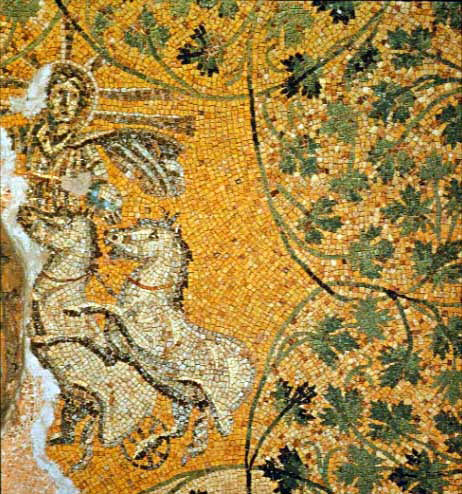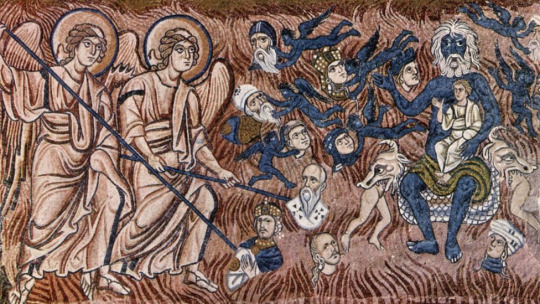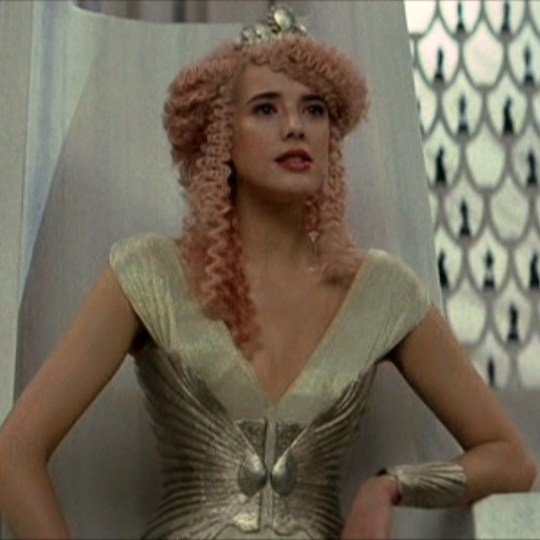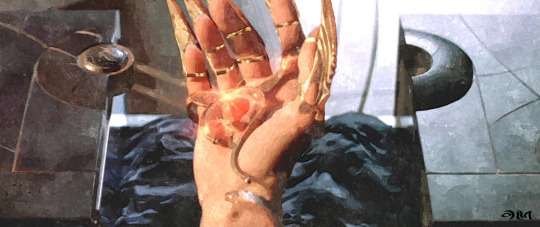#it is IMPORTANT to me that artemis and apollo appear identical
Explore tagged Tumblr posts
Text


artemis + apollo post toa and lester during toa
#toa#toa fanart#toa apollo#toa apollo fanart#pjoverse#pjoverse fanart#pjo artemis#pjo artemis fanart#lester papadopoulos#lester papadopoulos fanart#trials of apollo#the trials of apollo#trials of apollo fanart#the trials of apollo fanart#my art#rrverse#rrverse fanart#it is IMPORTANT to me that artemis and apollo appear identical#like identical twins#this is rlly important to me. i think when apollo changes his form post toa#artemis changes hers to match somewhat
608 notes
·
View notes
Text
The light of the hidden sun
An idea I fixate on sometimes is the esoteric mythological idea of the chthonic sun - that is, the sun in the underworld, most particularly in the sense of a dark double of the sun in the sky. In a Satanic context, that's reflected in the idea of Satan as the Sun, in the work of Aleister Crowley's presentation of Satan as the "spiritual sun". Here, though, I'll focus on a more Pagan meaning that ultimately connects to and undergirds the broader polycentric philosophy of Satanism and Paganism that I have. This is basically a long-winded expansion of my previous exploration of this idea via a Twitter thread yesterday.
It all starts out from an exploration of the seemingly rather paradoxical idea of Hades, the Greek god of the underworld par excellence, was also, in his own way, the sun. I remember stumbling on a Wordpress article about the idea, found it fascinating, but struggled to find support for it. Yet, more recently, I have come across something that perhaps lends support to the idea of the "solar Hades" being present within an actual Hellenic cultus, and with an attached theological context even.
In Leonard Thompson's "ISmyrna 753: Gods And The One God" (which you may find as part of a collection of essays titled Reading Religions in the Ancient World), we find a study of a particular funerary inscription that was discovered in 1875 at the Pagos Hill in Smyrna, an ancient Greek city located in what is now the Izmir Province in Turkiye. This inscription describes a sanctuary that was dedicated to numerous deities: Artemis, Helios Apollo, Zeus, Plouton Helios, Koure Selene, Men (an Anatolian god of the moon), and a divinity who seems to have been referred to as "God Himself". This is an interesting element, as it invites questions as to the identity of "God Himself", and the extent of its relationship to the broader "Western" monotheistic conception of God. The inscription is dated between the 1st and 2nd century, which may allow us to speculate about the possible influence of early Christianity or possibly some developments of Hellenistic Judaism that emerged at that time. However, the focus for me is the figure of Plouton Helios, who seems to be none other than Hades in solar form.
Plouton, you may remember, was one of the more polite names given to the god otherwise known as Hades. Hades may have occupied an incredibly important position as the lord of the dead, but he was not often worshipped directly or in name by the Greeks, who feared him because of his association with death. Even the name Hades was not often uttered because the god was seen as "most hateful to mortals", and so he was more often worshipped under different names. Plouton was one of them, and as Plouton he was worshipped as the lord of the fertility and mineral wealth that dwelled beneath the earth. So, then, Plouton Helios is to be understood as a distinct form of Hades, whose epithet surely denotes him as the sun. His consort, Koure Selene, is to be understood as an appearance of the goddess Kore, or Persephone, whose epithet denotes her as the moon.
In any case, Plouton Helios is contrasted with Helios Apollo; the former is an appearance of Plouton/Hades whose epithet is Helios, the latter is an appearance of Helios whose epithet is Apollo. Helios Apollo is perhaps meant to be understood as the daylight sun; both Helios and Apollo as standalone deities each tended to represent the sun and its light to some extent. By implication, then, Plouton Helios represents the sun in a different aspect. A similar contrast is established between Koure Selene and Artemis, in that Artemis is paired with Helios Apollo and, in that setting, she is pretty explicitly associated with the moon.
Plouton Helios as an expression of Hades is probably unique to Smyrna, but what is relevant for me is the meaning of Plouton Helios. According to Thompson, one interpretation, which is attributed to Porphyry and Heraclitus, suggests that Plouton and Kore represent the cycle of vegetation. In this interpretation, Plouton is the sun going down below the earth or around the lower hemisphere, drawing down the fertility of the seeds during the winter solstice or snatching up the shoots. In such a context, Plouton Helios and Koure Selene could have represented with that cycle of vegetation that then also resonated into broader themes pertaining to the cycle of life and death at large. But there's another meaning in play as well: the philosophical theme of the two suns.
Plutarch in On the E at Delphi discusses a theology that was ostensibly imparted to him by the philosopher Ammonius of Athens. This theology centres the god Apollo as a representative of Being itself, which is in turn represented by God, or rather "The One" ("The E"). In answer to the question "What is Being?", Ammonius says that "God", who is held to be eternal, uncreated, and incorruptible, is the sole source of Being, and that for this reason "God" is called Apollo or Apollon. This is supposedly because the name Apollo meant "denying the many", signifying the rejection or negation of multiplicity on behalf of the complete and ineffable unity of Being. But while Apollon was "The One", Plouton was "the many". Plouton, per Ammonius, was obscurity, darkness, and oblivion, whereas Apollon was clarity, light, and memory. Plouton, as Hades, was the realm of the unseen into which all beings pass upon their dissolution, while Apollon, as Helios, was the visible realm of embodied life. If the name Hades was meant to mean "invisible", "unseen" or "the unseen/invisible one", then this connotation makes perfect traditional sense.
It's hard not to escape a sense of the dualism that would later develop into Christian dualism. God, as "The One" and as Apollon, is unambiguously tied to Being, and simultaneously to light, memory, and the visible world, while Plouton/Hades, while not necessarily regarded as "evil", is presented as an antithesis to all of the traits that Ammonius affixes to his "God". Perhaps it is not entirely coincidental that Helios, as the sun god par excellence, would come to be syncretised with Jesus Christ as Christianity began to emerge in Rome, while Satan, in the medieval context, would increasingly take on a role contexutally and aesthetically similar to Hades.


But of course, there are ways to play with the theme presented by Plutarch via Ammonius. In Plutarch's context, Helios Apollo and Plouton Helios emerge as two suns: one sun is the visible sun, the celestial or diurnal sun, in this case representing the unity of Being, and the other sun is the invisible sun, the chthonic or nocturnal sun, in this case representing the unseen realm and the division and dissolution of Being. There are certain approaches to that idea that can be explored. For one thing, my mind found itself drawn to an ostensibly similar split in Kabbalah between Kether, the sefirot representing the primordial unity of God, and Thaumiel, its qliphothic counterpart representing the denial of this unity and, in its place, the counterveiling primordial division of will. Of course, for our purposes, that's where the similarity ends. Still another consideration is the broader pre-Christian landscape of underworld traditions, in which the underworld was not uncommonly imagined as a sort of surreal double of the living world rather than simply a bleak chamber of eternal punishment. However, the theme of the visible and invisible sun also has references with certain later ideas found within Neoplatonism.
In Against The Gallileans, the Roman emperor Flavius Claudius Julianus established that, per Neoplatonist parlance, there was both a visible sun and an invisible sun:
Plato gives the name gods to those that are visible, the sun and moon, the stars and the heavens, but these are only the likenesses of the invisible gods. The sun which is visible to our eyes is the likeness of the intelligible and invisible sun, and again the moon which is visible to our eyes and every one of the stars are likenesses of the intelligible.
This invisible sun would, in Platonist terms, be the Form of the sun that existed beyond the visible sun and underpinned its visible being within the handiwork of Plato's Demiurge. The "hidden sun" in Neoplatonic terms was, of course, Helios, who in Iamblichus' philosophy was also the Paternal Demiurge, and the principle of the noeric, that is to say the hidden. The invisble, in Neoplatonic terms, would refer to the noetic or noeric realms, different levels of the divine mind or intellect from which the visible world ultimately derives its source.
It may indeed be here that the fun begins. Some aspect of that premise can be flipped, where we are dealing with an invisble, underlying layer of reality, but instead it's what Jake Stratton-Kent called the deifying power of the underworld. It's the Darkness out from which light and everything else ultimately derives its source, and perhaps arguably, derives its dark quality from its invisibility from our standpoint. Perhaps, and this is something I've thought about, the black we thematically associate with darkness is similarly connected to experiential standpoint: black containing all possibilities, but we cannot see them. We have no idea might see beyond black, beyond the void when we close our eyes.
The hidden sun in this setting can denote the light of that pure reality, the illumination of the hidden principle that animates embodied life, and, in a certain way, makes it sacred as much as profane. Going down into the bottom of the earth and beholding that dark light, going down into the deifying power of the underworld in gnostic terms gives its own distinct spin to the basic core of Paganism in a way. Using Nietzsche's phrase "nature-idolatry" (by which he praised Goethe for embodying) here for a moment, by which we mean some extent of the worship of nature, the concept I speak to means taking "nature-idolatry" beyond the ordinary gratitude for the faculties of the visible natural world, and into a sort of gnostic appreciation for the whole of nature and the process of embodying it by acknowledging and embracing its true principle and power, the realization of which brings one towards the divine in its true basis and, as a result, affords freedom in the human condition.
In view of the mystagogical tradition of the mysteries and of goeteia, per Amir Ahmadi's examination in The Daēva Cult in the Gāthās, we may extrapolate that the ability to pass through or transgress the boundary between humanity and the gods through magical or occult means is essential to the kind of gnosis of which I speak, which is thus inevitably linked to katabasis: descent into the underworld, typically to realize a godlike afterlife. Thus we hear of the katabasis of Pythagoras, him "disappearing into Hades" by way of an underground chamber and then ritually re-emerging. Thus initiates of the Orphic mysteries must learn the geography of Hades and descend into the underworld to attain their place in the immortal company of the blessed. Empedocles apparently enacted his own form ritual katabasis and supposedly even Zoroaster went down into the underworld. The Greek Magical Papyri contains some fragments of a ritual wherein the practitioner must enter the underworld and then recite spells to protect oneself from hostile daimones, which is on its own very in line with Egyptian magic and particularly the spells meant to ensure the immortality of the pharaoh. Perhaps there is convergence with a much larger theme or tradition in ancient mysticism, where the point was to go down into the divine (perhaps even God!) rather than ascend up into it.
And, of course, I would argue that this is necessary because you cannot apprehend the light that lies below by which of the light of the visible sun: that is, the mundane perception of the mundane world cannot, by itself, penetrate into darkness from outside. It must descend, it must go down into the underworld. Profane illumination (per Walter Benjamin) must enable sight to tear through the normative perception of the world and into the realities it obscures. In the context of Hellenic or Hellenistic convention, Helios, and to some extent Apollo, cannot set foot into the underworld, the rays of the physical sun cannot shine in its darkness, and this must be understood to mean that the light of the mundane-phenomenal or normative consciousness that we abide ourselves in cannot, in itself, penetrate the underworld, and so we must darken ourselves. To follow darkness into the bottom of the earth, and see the hidden sun, whether we understand this as Satan or as Hades.

#paganism#hades#hellenic polytheism#neoplatonism#chthonic gods#the underworld#smyrna#sun#night sun#sun gods#gnosticism#satanism#left hand path#darkness#pluto#plouton#helios#apollo#ancient greece#chthonic
43 notes
·
View notes
Text
5 Anti LO Asks
1, Another Greek here -
Now, my experience could be different from other Greeks, but from what I've seen and experienced the Gods that are still relevant and important to Greek culture are definitely Demeter, Apollo, Artemis, Dionysus, and Athena. Not that the other Gods are not relevant, just that these five in particular pop up the most and also have official name days in our Christian Orthodox calendars.
This is what bugs me (among other things) about Lore Olympus. Here, Smythe has taken Apollo, Demeter, and Artemis and ripped their whole identities in order to tell this strange story of how Persephone (or more like Perfect-phone) was abused and wronged by everyone around her - except Hades. Which, as mentioned a few times by anons, was actually the only one who wronged her in the myths! Other than Zeus of course but - that guy wrongs everyone lol.
Now, I understand that Smythe has every right to create a story about our myths. She can change whatever she wants - they are not under copyright. However - It's just the principle behind it. I wouldn't take Gods that are important to, let's say, Indian culture and turn them into villains just to make one of their other Gods look perfect? This is ridiculous.
2. As a random point, why is Demeter green and purple? Demeter's colors are gold and red. Gold for the wheat, and red for the poppy flowers that grew all over her fields. Shouldn't she be Hera's colors technically? And Hera should have Demeter's colors - purple and green, because of the peacock.
I don't know, the color choices just seem strange to me.
3. From reading all the messages here I've been imaging my own version of Hades & Persephone where she still gets kidnapped and the story alternates between her and Demeter and what they go through
4. Let it never be said that I’m a cynic, mainly because I rarely point out or critique a person’s art style due to the “subjective” nature of art in general. But the moment I saw the visual for the courthouse in EP. 173, I was absolutely aghast. A lack of tall columns, no decorative details or mythical elements, seemingly no Greek influences whatsoever. Seriously, the editors/RS could’ve had a blast with creating an entire Olympus-style courthouse! Instead we get a sleek glass building that’s painted a regular blue color and appears as though it were copypasted from a 3D modeling website. I’m not sure why it bothers me so much. It's almost like RS keeps staring at the rich, ancient coding of Greek culture and thinks “nah, not enough Americana” and continues bolting stars and stripes onto every orifice of the series’ visuals. I can understand the need for the story to be “modernized” by plot standards, but it's practically dripping with western overtones at this point: the capitalist nature of the Underworld, the classic 50s pinup appearance of every female character, the New York-inspired buildings of all the realms...
5. I’ve noticed on the Lore Olympus Reddit page that a lot of the comic’s fans continue to seem dissatisfied with the recent chapters as a whole -- and with good reason. The excuses seen most often for the story’s mediocre “cliffhangers” and long-winded expositions is that RS is “dragging out the story for the upcoming animated series” or that the Webtoons organization has forced her in a corner when planning the structure of her episodes. If you believe that it was all Webtoons doing for the current stagnation (which I don’t believe), RS should’ve caught onto this a while ago and written her chapters accordingly to fit the new model, but she continues producing these redundant tactics anyway. This setup was most egregious during the flashbacks of Minthe and Hades’ initial meeting (EP.149-150); the recollections only appear for a couple chapters, but this storyline took two weeks to conclude during the period of weekly updates. The same thing happened in the arc before the current trial plotline, where we spent a good nineteen chapters (nineteen weeks) mucking around the Underworld before anything remotely about Persephone’s trial is even alluded to. Granted, those chapters did include Daphne's hibernation, the confrontation with Leto, and the reveal of Psyche’s identity -- but it was also during that time where many LO fans were still wondering “so...when is Persephone going to be prosecuted?” or “is Apollo going to be punished at all?” Many webcomics with a similar amount of panels to LO are able to produce much more satisfying content because it's creators have the ability to purposefully plan which plot points will be disclosed within that certain episode. Not in Lore Olympus, however! Get ready for long stretches of nothing and a plethora of middle school-level philosophies that will keep you at the...sorta edge of your seat.
36 notes
·
View notes
Photo



Imagine being Eris, Goddess of Chaos, daughter of Zeus and Hera and twin sister of Aries; and Loki being enchanted by your beauty and power.
Info for role-playing is below:
|| Biographical Information ||
"Better you battle Zeus himself, than me." - Discord
- Real Name: Eris
• Meaning of the Name: Strife
- S.H.I.E.L.D Name/Alias: Discord
- Other Aliases: Bellona, Enyo, Discordia
- Nickname: Tony Stark sarcastically named her Sunshine (much to her displeasure).
- Born: N/A
- Age: N/A
- Birth Place: Olympus
- Current Location: Earth
- Base of Operations: Olympus, possibly the Areopagus.

- Occupation: Goddess of strife and discord.
- Identity: The general populace of Earth is unaware of Eris’ existence except as a mythological character.

|| Personality And Traits ||
- Personality Types: Wicked, vindictive, judgmental, fun loving, passionate.
• Eris represents true malevolence and deviance, she has no morals of good and/or nobility. She is seen as spiteful, vindictive and passionate when it comes to the prospect of the world potentially crumbling into chaos; which she refers to as being a glorious event. She is seen enraged at the fact that she has gotten her way which shows her to not be one who likes fair and square events. Eris is also seen as wickedly intelligent and takes a dullness tone to the happy endings which often gets her into a fight with her half-sister Aphrodite.

|| Physical Information ||
- Species: Olympian Goddess
- Gender: Female
- Hair Color: Silver/White (albino)
- Eye Color: Purple (albino)
- Skin Color: Pale
• Note: Eris is an exceptionally beautiful woman who is said to look like "a vision of the good spirits in flesh, though they themselves would fear her". She has long silver hair and intelligent, piercing, lilac eyes. Eris had a soft, silken voice and is always clothed in a fine golden or red dress. She never grins, though she produces disarmingly subdued smiles. She detests flattery, because "vacous flattery is the sound of a prybar, a tool used by a thief as he tries to get what she has." Her least favorite color is pink.
|| Eris | Pictures ||


|| History ||
"She takes after her mother." - Zeus about Eris


Eris is the daughter of the Zeus, Ruler of the Olympian gods, and his wife, Hera. She often entered into the schemes and plans of her older twin brother Ares to ignite the dissension that often leads to war. Possibly as a way to cause dissension between gods and mortals, she stole the golden apple from the garden of the Hesperides guarded for Hera and had it engraved with the words, “For the Fairest.” She then tossed it among the guests attending the marriage of King Peleus of Aegina to the goddess Thetis. Hera, Athena, and Aphrodite then tried to claim the apple in the dispute that triggered the Trojan War. Her activity after that event is unrecorded, but after the war, several Trojan refugees lead by Dardanian prince Aeneas conquered the area upon Rome was built on. During the Roman Empire, Eris was intensely worshipped by the Romans as one of their most important goddesses. During this time, Hercules most often antagonized Eris as he prevented most of her attempts to cause dissent and strife among mortals.
"Discord, you are my wrath. Send their bodies to Underworld and bring me their heads." - Hades

During one of his skirmishes with mortal heroes, Hades gave Eris the ability to turn into giant tapian snake called Enyo. She has bitten heads of mortal heroes off and brought them to Hades in the Underworld. Eris later used both this giant and small form of tapian snake to spread more strife among the mortals.

In his visits to Earth, Zeus became incensed that Eris was taking an active role in exciting her followers into killing Christians in his name. He decided to break off ties with Earth and allow the worship of the Olympian Gods to fade away. Eris retaliated by assisting many of the gods eager to preserve their ties to earth into hunting down mortals. Zeus faked his death to lend credence to an end of worship of the Olympian gods. To all who had seen these events, it appeared as if the gods were dead, but Zeus had several spells in effect that any god that was killed would be restored to life. Eris in meantime tried to hold on to whatever worshippers she had, but it all ended quickly. Defeated, Eris retreated to Olympus for some time.


In modern years, Eris became intrigued by the forces of terrorism and racism on earth and even masqueraded as a mortal to stir up trouble between blacks and whites, Jews and Anti-Semitics, left and right wing liberals and other potentially controversial groups. Seeing as her brother Aries had fared unsuccessfully against Hercules, she began training her own modern champion, Centurion, as a worthy ally. She eventually sent him to kill Kyllian, a mortal man imbued with the power of a trio of Celtic Gods, many of whom the Olympian gods beheld with some enmity. After Kyllian defeated Centaurion, Eris realized that he might make a better pawn or ally than a new adversary and she vanished back to Olympus to plot her next scheme.
|| Recent History ||
"You humans are so predictable." - Eris
• Her first appearance is noted by Tony Stark; he claims that he first saw her in Afghanistan for a very brief moment not knowing her true identity. Their conversation was short and it ended with her saying, "You know what I like about you, Stark? You don’t have a heart." Then she just vanished into the thin air with misty fashion. After he was critically wounded Stark wandered more about her true nature.


• Her second appearance is after the death of Stane. Tony confronts her about past events asking was she somehow involved in all that. Her response was that he must be more specific because- "a lot of things are her fault." She then introduces herself as Eris Goddess of Discord, before vanishing once more. After the defeat of Vanko, Tony found his home in a chaotic mess and a note on his desk which said: "Discord favors the heartless." Hinting that he is favored by Goddess Eris. She appeared a few times more after that, usually to protect him stating that "nobody is allowed to decapitate her favorite mortal". She also had a few ‘interesting’ encounters with Clint Barton and Bruce Banner who aren’t that much fond of her.

|| Extra Information 1.00 ||
"There’s my Sunshine!" - Tony Stark to Eris
- Likes: Chaos, tipping the balance of good to evil.
- Dislikes: Losing, being proven wrong, defeat, nobility.
- Group Affiliation: Olympus, Ares, Hades, herself.




- Ancestry: Zeus (father), Hera (mother), Ares (older twin), Hephaestus (brothers), Eileithyia, Hebe, (sisters), Hercules, Apollo, Hermes, Dionysus, Perseus (half-brothers), Artemis, Athena, Aphrodite, Persephone, Panthia (half-sisters), Poseidon, Hades (uncles), Demeter, Hestia (aunts), Asclepius, Cupid, Janus, Deimos, Phobos (nephews), Harmonia (niece), Triton, Rhode, Benthescyme, Neptunia, Arion, Pomona, Consus, Vertumnus (cousins)…
- Common Olympian Powers And Limitations: immortality, regeneration, shapeshifting, flight, the ability to become invisible to the human eye, telekinesis, superhuman strength, stamina, heightened senses, speed and they have the ability to "teleport." Some possess the ability to manipulate matter and the elements of nature and are able to create natural phenomenon or natural disasters. They also possess a wide range of seemingly magical spells such as the casting of fireballs. One Olympian god cannot restore humans or gods to life. It took both Zeus and Hera to restore the life of their grandson, Evander. Also, most of them cannot heal others without the blessing of either Athena or Zeus. The only gods that were able to do so were Ares and Hades. Only a very few things can kill an Olympian: Hind's Blood, the Ribs of Kronos and Zeus.
- Eris’ Strength Level: Eris possesses superhuman strength enabling her to lift (press) about 25 tons under optimal conditions.
- Known Superhuman Powers Of Eris: She possesses the conventional physical attributes of the Olympian Gods. Like all Olympians, she is immortal. She has not aged since reaching adulthood and cannot die by any known conventional means. She is immune to all known terrestrial diseases and is invulnerable to conventional injury. If wounded, her godly life force would enable her to recover with superhuman speed. It would take an injury of such magnitude that it dispersed a major portion of her bodily molecules to cause her a physical death. Even then, it might be possible for Zeus or a number of gods working together to revive her. Also, she is able to make herself invisible to mortals, or only visible to one person she chooses to, which makes easier for her to plant discord and hatred in the heart of mortals, however, gods and half-gods are immune to this effect and can see her all the time. Eris does have some superhuman strength, but she is not quite the powerhouse as gods like Hercules or Ares. Her Olympian metabolism gives her far greater than human endurance in all physical activities. Eris also has limited mystical powers common to all the Olympian gods, such as shapeshifting into a tapian snake. According to her, each Olympian has personal object foraged by Hephaestus that enables their powers; hers is known as Discord’s Ribbon Device and it gives her many supernatural abilities.

"Do you really want to test my powers?" - Eris
- Her Normal Abilities: Eris has great skill in the use of all the implements of war used in the time of ancient Greece and Rome.
|| Discord’s (Clawed) Ribbon Device ||
"Put your hand down!" - Clint Barton
Discord’s Ribbon Device, is a multifunctional Olympian apparatus foraged by Hephaestus. The hand device is a gold colored, forearm-length glove worn on the left hand of the user, with a red gem in the center of the palm. It is controlled by a neural interface and is powered by DNA in the user's blood, functionally rendering it impossible to use except by Eris. The device has numerous functions with a variety of controls on its surface that can be used. It can also wirelessly control Olympian technology, triggered through a button on the back of the palm.
|| Discord’s Ribbon Device || Its Abilities ||
- Conducting a scan of a human - though it is unknown what the scan actually detects.
- Firing a powerful kinetic energy wave, capable of throwing grown humans several meters with significant force. It can potentially kill the target if they impact a solid surface nearby.
- Shooting a deadly fiery energetic neural link that connected to the brain of another person with the intention of torturing or killing them.
- Creating an energy shield that encompasses and protects Eris from harm. This shield only stops things that are incoming at high velocity and blasts. Arrows and thrown items go right through the shield.
- Paralyzing a human.
- Giving Eris ability to use pyrokinesis and telekinesis.
"You never were one for flowers." - Ares to Eris after she burned down Persephone’s garden.

|| Extra Information 1.05 ||
- Theme Song: Everybody Knows by Sigrid
-Signature Look: Seen can usually be seen in a golden or red dress. Most commonly, however, she is seen in black armor.
- Her Sacred Animals Are: Tapian snakes and Hydras.

• Note: Hera raised three Hydras. She sent first one to kill Hercules, and the last two she gave to Eris.
- Love Interest: Loki


|| Discord’s Quotes ||
"Glorious chaos."
"I'm missing some excellent chaos here."
"Every argument has two points of view. Otherwise, there would be no room for discord. Think about it."
"You are far too hard on yourself, my dear, sweet, mortal friend. What would the people do without you? Dance? Sing? Smile? Grow old?"
"The last time I was this bored I took hostages."
"No! You can't take away my power!"
"Only two of those times were my fault."
"The kid was raised by wolves; until she killed them and ate them all…"
"I’m a simple girl who’s into anarchy and chaos. I also enjoy walks during sunset through battle-torn wastelands."
"Do you want to see the face that launched a thousand wars?"

|| Quotes About Discord ||
"Discord is here?! I hate it when I can’t see her!" – Clint Barton
"Discord thinks only of discord." – Tony Stark
I’m looking forward to role-playing this very much. You can send me an e-mail if you are interested: [email protected] -much love, NovaUrsa
#thor#loki#thor odinson#loki laufeyson#avenegers#tony stark#zeus#ares#original character#oc#roleplay#rp#imagine
88 notes
·
View notes
Text
Books I Read in 2017
Alphabetical list here, reviews under the cut in chronological order:
Almond, David: A Song for Ella Gray
Bardugo, Leigh: The Grisha Trilogy, Six of Crows, Crooked Kingdom
Cline, Ernest: Ready Player One
Cloonan, Becky, Brendan Fletcher, and Karl Kerschl: Gotham Academy Vol. 1-2
Cluess, Jessica: A Shadow Bright and Burning
Coulthurt, Audrey: Of Fire and Stars
del Duca, Leila and Kit Seaton: Afar
Dragoon, Leigh and Jessie Sheron: Ever After High: Class of Classics
Flores, Chynna Clugston, et al.: Lumberjanes/Gotham Academy
Gaiman, Neil: American Gods
Gaiman, Neil and Chris Riddell: The Sleeper and the Spindle
George, Madeleine: The Difference Between You and Me
Gilmour, H.B. and Randi Reisfeld: T*Witches #1-10
Hale, Shannon: Princess Academy: The Forgotten Sisters, The Unbeatable Squirrel Girl: Squirrel Meets World
Hicks, Faith Erin: The Nameless City, The Stone Heart
Jensen, Michael and David Powers King: Woven
LaCour, Nina: We Are Okay
Larson, Hope: Chiggers, Mercury
Lubar, David: Sophomores and Other Oxymorons
Riordan, Rick: The Trials of Apollo #1-2, Magnus Chase and the Gods of Asgard #2-3
Shea, Lisa: Ever After High: Once Upon a Twist: Cerise and the Beast
Stewart, Cameron, Brendan Fletcher, and Babs Tarr: Batgirl Vol. 1
Stoker, Bram: Dracula
Sugiura, Misa: It’s Not Like It’s a Secret
Turtschaninoff, Maria: Maresi
Weir, Andy: The Martian
West, Hannah: Kingdom of Ash and Briars
I also listened to a lot of audiobooks as I was working this year, but since I have terrible audio comprehension, I stuck to books I’ve already read and know I like:
From Tamora Pierce, Alanna: The First Adventure and the Trickster series, read by Trini Alvarado. The Protector of the Small series, read by Bernadette Dunne. The Immortals Quartet, Sandry’s Book, and The Will of the Empress, Full Cast Audio narrated by Tamora Pierce. All of them were good, but I especially loved hearing the Trickster series and all of the Full Cast books. I absolutely recommend them. Immortals was my favorite.
From Eoin Colfer, the Artemis Fowl series, read by Nathaniel Parker. I liked it a lot. It’s nice being able to hear the accents and remember that Artemis is actually Irish.
T*Witches #1-10, by H.B. Gilmour and Randi Reisfeld. Twin witches who were separated at birth meet at age fourteen and must learn magic to protect themselves from their evil uncle. This is a series from my childhood that still holds up in a cheesy nostalgic way. I always found the attempt at teen slang baffling, but at its core the story is still about family and girls supporting each other and trying to do the right thing. Excellent and complicated relationships between both biological and adopted families, excellent and complicated supporting characters.
Dracula, by Bram Stoker. An ancient vampire brings death and evil to England while a group of mostly-bumbling protagonists try to stop him. It’s hard to read a book like this without being influenced by the cultural interpretation, but one thing that really threw me off is the importance of characters that seem to get really downplayed in adaptations. I wouldn’t say I enjoyed the book, but I did enjoy how ridiculous parts of it was.
The Unbeatable Squirrel Girl: Squirrel Meets World, by Shannon Hale and Dean Hale. A fourteen-year-old girl tries to make new friends while keeping her squirrel tail and superpowers a secret. I love Shannon Hale’s children’s books. Squirrel Girl had the charm of her Ever After High work, surprisingly without being as over-the-top. Doreen isn’t the type of protagonist I tend to relate to and I always get a little weirded out with anthropomorphized animals, but the book was fun and funny with distinct voices and an appropriate amount of camp. Also, footnotes.
The Difference Between You and Me, by Madeleine George. The closeted popular girl and school outcast are on opposite sides of school politics, which causes problems in their secret relationship. I feel like there are tons of fanfictions like this, so I was glad when this book didn’t run into the overused tropes. Unfortunately, it didn’t really have much in the way of conflict at all, which was surprising when it seemed like every single character’s opinions were meant to be deliberately polarizing. I thought that situations and characters were set up really well, but none of it really came together in a satisfying way.
Chiggers, by Hope Larson. Graphic novel. A girl navigates summer camp drama and befriends the girl no one else likes. I’ve heard a lot of good things about Hope Larson, but I couldn’t like this book even though I was trying to. It felt like nothing was happening for most of the story, and I’m not sure what was accomplished in telling it. The elements of magical realism were interesting, but it wasn’t enough to carry the story, and neither was the mundane drama. There wasn’t enough time to invest in the characters.
Mercury, by Hope Larson. Graphic novel. A girl’s experience with a mysterious gold prospector affects the life of her modern-day descendant. The story was thought-provoking, even if it took me a while to get into it, and the magical realism was well-integrated. I don’t love Larson’s cartooning style, but I thought it was much more readable than Chiggers without sacrificing its uniqueness.
The Nameless City, by Faith Erin Hicks. Graphic novel. A boy befriends a native girl in the city his people conquered. Hicks’ visual storytelling skills are excellent, and I love how her characters and expression can be both subtle and cartoony. The story was thoughtful and deals with political realities in a way that doesn’t demonize or alienate anyone. Jordie Bellaire’s color palettes are beautiful.
Unfortunately, the sequel The Stone Heart doesn’t quite live up to the first book. The art is still excellent, but the pacing and plot seemed less well-planned, especially since the story now seems to be heading in a more predictable direction. There’s a third book forthcoming, so maybe that opinion will change.
Batgirl Vol. 1: Batgirl of Burnside, by Cameron Stewart, Brendan Fletcher, and Babs Tarr. Trade paperback. A college student tries to reinvent her vigilante identity while dealing with being the personal target of a mysterious villain. This was definitely not a bad book, but it also didn’t feel like a Barbara Gordon book. If you’re writing for characters with decades of history, that legacy deserves to be respected, and I’m not sure Stewart and Fletcher accomplished that in the writing. Separate from preconceptions, the plot was solidly set up with good dialogue and distinct characterization, although I thought Barbara’s arc had a weak resolution. Tarr’s art is great, though, and I can definitely see why this series is so popular.
Gotham Academy Vol. 1-2, by Becky Cloonan, Brendan Fletcher, and Karl Kerschl. Trade paperbacks. A girl investigates a haunting at her school, which is connected to a mysterious summer experience she can’t remember. Kerschl’s character acting is excellent, and the relationship between the protagonist Olive and her ex-boyfriend’s sister Maps is immediately compelling. The cast is well-rounded and interesting, and I enjoyed reading a comic set in a superhero world without being a superhero book. Plot elements are set up from the first issue, and the story is a lot of fun overall.
A Song for Ella Grey, by David Almond. A modern version of the Orpheus and Eurydice myth is told from the perspective of Eurydice’s best friend. Almond is an excellent writer, but I felt like this was a story that didn’t need to be retold, especially with his addition of a tragic unrequited queer romance. The protagonist doesn’t have any agency within the storyline so it felt like a series of events happening in sequence rather than a narrative. I did think the formatting shift at the turning point was interesting, but the myth dragged unnecessarily in order to fill the length of the novel.
The Trials of Apollo #1: The Hidden Oracle, by Rick Riordan. The Greek god Apollo is sent to earth as a teenager as punishment for his arrogance and is bound to the service of a young girl. It’s hard to enter into the Trials of Apollo series without prior knowledge of Percy Jackson and the Olympians or Heroes of Olympus, and even as a fan of the other books in the universe, I had a hard time engaging with Apollo as a protagonist. The narration fit the character well, though, and Riordan deals with serious subjects without resolving anything prematurely. I liked that each chapter was introduced with a haiku rather than a title.
The second book in the series, The Dark Prophecy, is similar in tone to the first. I would say the biggest change is the addition of Leo and Calypso from the prequel series to finish off the classic trio of heroes. That dynamic was interesting, and I also really enjoyed the appearance of my favorite Percy Jackson character.
We Are Okay, by Nina LaCour. A girl deals with grief over her grandfather’s death and reconnects with her best friend during winter break of her first year of college. It was a slow start and I had some trouble keeping up with shifts in the narration, but I ended up liking this book a lot. The writing is atmospheric and captures the protagonist’s thoughts well. The setup for the mystery is subtle and doesn’t take focus from the characters.
American Gods, by Neil Gaiman. After three years in jail and his wife’s death, a man takes a job that involves him in a war between old and new gods. I really like Gaiman’s writing, and Shadow is a protagonist that is engaging despite his relative passiveness. Even so, I wouldn’t say this was a book I actually enjoyed all that much, and plot twists were well-developed to the point that they weren’t particularly surprising or satisfying. I’ve seen a lot of stories modernize gods, so Gaiman’s treatment didn’t seem as unique as I’d been led to believe. That being said, maybe I would have enjoyed this more if I’d read it earlier.
Magnus Chase and the Gods of Asgard: The Hammer of Thor, by Rick Riordan. A teenager resurrected as a Viking warrior goes on a quest to retrieve Thor’s hammer. This series in particular seems to depend on pop culture references, so while I liked the writing, I wonder if it will stay as relevant as Riordan’s other books. I did really enjoy the cast and the expansion of their backstories, and this book sets up what seems to be more of a crossover with the Percy Jackson series.
Book three, The Ship of the Dead, was also really fun. The closing of The Hammer of Thor was a little misleading in that the crossover elements were limited to the beginning and end of the story as usual, but by this time the characters are more than capable of standing on their own. It seems like this book is the last of the series, and it managed to close out the plot pretty well.
Six of Crows and Crooked Kingdom, by Leigh Bardugo. Six teenagers are hired to break a political prisoner out of a foreign country. Not only is this an excellent heist story with a really detailed plot, but each of the characters are fully developed and they all have their own arcs throughout the books. Bardugo’s cast is inclusive and intersectional without feeling like she’s checking off a list and the writing is witty with clear voices. Both the characters and plot drive the story. I can’t say enough good things about this duology.
The Grisha Trilogy, by Leigh Bardugo. A teenage soldier discovers an elemental power and becomes part of a plan to overthrow a corrupt monarchy. This trilogy takes place before Bardugo’s Six of Crows books, but it was disappointing in comparison. I really disliked the protagonist, and there was a lot of focus on a frustrating romance, to the point that it overshadows the interesting worldbuilding. The plot dragged in places, despite being too thin to fill three books. Even so, there are a few really great supporting characters that almost made it worth it.
Sophomores and Other Oxymorons, by David Lubar. After a successful freshman year, a teenager’s overconfidence causes problems at his high school. This is the belated sequel to Sleeping Freshman Never Lie, which is one of my favorite books. Sophomores seems more self-referential and has a subplot that doesn’t seem to fit the tone as well, but for the most part it had the same witty charm that I loved about the first book. Of course, the best part of the series is still Lee, the female lead.
Maresi, by Maria Turtschaninoff. An abbey novice discovers her calling when a new girl with a troubled past arrives. This book was originally published in Finnish, I believe, but I think it must have lost something in the translation. The narration is distant, and even though parts of the world are described, it was hard to picture any of the setting. Overall it didn’t really hold my interest.
Kingdom of Ash and Briars, by Hannah West. After gaining magic powers and immortality, a girl becomes responsible for ensuring peace throughout three kingdoms. I really didn’t like this book. It treats the female characters poorly, especially the antagonist, and although the plot is ostensibly about duty, it’s heavy-handed, relies too much on tropes, and is really obviously motivated by romance. A lot of this can be overlooked if it’s ironic or just done well, but it never came together and ended up being very frustrating.
Of Fire and Stars, by Audrey Coulthurst. As she enters an arranged marriage, a princess has to hide her magic and her attraction to the prince’s sister. Even though the two protagonists are supposed to have equal weight, I ended up almost actively disliking one of them. The plot isn’t terribly engaging, but because I couldn’t get behind one of the characters, the romance couldn’t carry the novel for me. It wasn’t bad, but I wish it was better.
Princess Academy: The Forgotten Sisters, by Shannon Hale. A commoner-turned-princess takes an unattractive job to teach court manners to three royal sisters. This book is the third in Hale’s Princess Academy series and it is just as excellent as the first two. The plot is set up well across multiple books, and Miri is an excellent and flawed protagonist who is capable without overshadowing the other characters. The romantic plots don’t feel forced and the narration accomplishes a lot of interesting worldbuilding. Another book with girls supporting one another despite not necessarily understanding each other.
The Martian, by Andy Weir. An astronaut is stranded on Mars after an early mission evacuation and must survive until he can be rescued. I was skeptical about the premise, but everything is well thought out and clearly explained, without sacrificing either reader engagement or scientific accuracy. The protagonist has a great voice, but as soon as the perspective shifts away from his first-person mission logs, it’s easy to tell that Weir isn’t a very experienced writer, since the other characters and third-person narration are not nearly as well-defined. Overall, though, it was still a good book.
Ready Player One, by Ernest Cline. A high-schooler who is desperate to escape a dystopian future dedicates his life to solving a virtual reality puzzle and becoming the heir to a video game empire. There were two things that I really disliked about this book, the first being the protagonist, who seemed like a terrible person for most of the book. The second is that, despite being ostensibly a celebration of pop culture (and especially 80s pop culture), the overall viewpoint seemed really rigid and judgemental. The writing was fine, and there were some really interesting puzzles, but in the end I felt like it was male nerd entitlement in novel form.
Ever After High: Once Upon a Twist: Cerise and the Beast, by Lisa Shea. The daughter of Red Riding Hood and the son of King Charming are forced into the roles of Beauty and the Beast in order to escape their midterm exam. Cerise and Dexter seem like an odd pair, which sometimes works in the Ever After High universe, but didn’t really here. Part of this I think is because this book is written for an even younger audience than the original so the characters lost a lot of their nuance. The only part of the story that surprised me was almost immediately negated by a soap opera-worthy plot device to prevent the status quo from changing.
Afar, by Leila del Duca and Kit Seaton. Graphic novel. A girl tries to fix problems caused by her newfound ability to project herself into different worlds, while keeping her younger brother out of trouble. There is a lot of visual worldbuilding here, which I thought was very well done. Plot wise, it felt like the protagonist’s arc was maybe just the first act of a much longer book, but the characters were solid all around.
Lumberjanes/Gotham Academy, by Chynna Clugston Flores, Rosemary Velero-O’Connell, Kelly Matthews, and Nichole Matthews. Graphic novel. The ensemble casts of Lumberjanes and Gotham Academy work together to free their teachers from a girl’s attempt to relive a disastrous birthday. I think this book is set up more for fans of both series, and since I’ve only read a little of Lumberjanes, I felt like I was playing catch-up for some parts. I did really like the parts that showcased the Gotham Academy characters, though. I felt like the art was missing the lushness and texture of what I remember of the regular series, which was disappointing.
Ever After High: The Class of Classics, by Leigh Dragoon and Jessi Sheron. Graphic novel. The children of popular fairy tales learn more about their parents by using magic to relive parts of their high school experience. This book was very disappointing compared to other parts of the franchise. The art is minimal and flat compared to the webseries, and all but one of the anthology-esque stories felt like retreading old ground. I also really disliked the narrative hoops the audience was expected to jump through just to keep anything significant from changing.
It’s Not Like It’s a Secret, by Misa Sugiura. After moving from Wisconsin to California, a Japanese-American girl struggles to build a life she is happy with while keeping secrets that could ruin her family. This book was a bit surreal to read because specific parts of it were identical to my high school experience, while other parts were completely foreign. Still, the writing is solid and thought-provoking, and I liked that there is no easy answer to the protagonist’s problems.
A Shadow Bright and Burning, by Jessica Cluess. A newly-discovered sorceress takes on the role of a prophecized savior in a fight against enormous apocalyptic monsters. I found it a little difficult to get into the characters, especially since there is only one girl in a large group of boys and the gender difference is a large part of their interactions. I disliked the romantic subplots, which seemed to take over the narrative, even though the worldbuilding and political aspects of the plot were really interesting.
The Sleeper and the Spindle, by Neil Gaiman and Chris Riddell. A queen postpones her wedding to deal with the sleeping curse that threatens to spread from the kingdom next door. The story begins as a mix of archetypes from Snow White and Sleeping Beauty, but Gaiman’s atmospheric writing elevate it even before the surprising finale. Riddell’s illustrations and other visual choices for the physical book are beautiful and tell the story meaningfully. Highly recommended.
Woven, by Michael Jensen and David Powers King. After his murder, an aspiring knight goes on a quest with a spoiled princess to stop the universe from unraveling. This book had an interesting premise, but its execution filled me with rage. Although it pretends to have dual protagonists, the princess is treated horribly by the narration without any kind of self-awareness. She is given a thin veneer of fighting ability but no agency in the story and is constantly being rescued without payoff. The writing and pacing also seemed flat. Overall extremely frustrating, especially because of the hints of interest.
#literature#book review#tamora pierce#immortals quartet#artemis fowl#grisha trilogy#six of crows#gotham academy#ever after high#percy jackson#magnus chase#twitches#dracula#neil gaiman#the sleeper and the spindle
7 notes
·
View notes
Text
Mandibuzz tribe info
This came out really long! This mostly focuses on imagery, faith, and how it relates to gender roles in the tribe.
Nesim’s tribe consisted of mainly Mandibuzz with a few other flying type pokemon. They are a nomadic group who roam around Thebos Islands (homage to the appearance of Thebes as a location of many myths). They are matriarchal in structure and everyone is taught how to hunt with bow and arrow from a young age.
They make use of oral poetry and lyrics to pass on knowledge, including myths on their origin as rising from the teeth of a slain Salamence (See: Cadmus and the Dragon). A lot of recreational activities include sharing lyrical stories as well.
A major part of their faith is worship to Xerneas (Artemis) and honoring her gift of life by being unafraid of death. They use bones and hides as decoration and pretty much for everything else as well. Children’s toys, jewelry, weapons, utensils, appliances, pottery, everything incorporates bones and other remains somehow or another.
Children wear Lunulas with a painted carving of Xerneas’ head and antlers as a protection amulet (the same way Greek and Roman children wore them). Some adults keep theirs to pass down to children and grandchildren. There is a preference for birthing girls, so sometimes a mother will wear hers through pregnancy to give Xerneas’ life-gift to the child in the hopes of having a girl.
In general, in addition to being a matriarchy, the tribe believes in strong female power and protection of young girls. While other tribe members may be Aerodactyl or some other winged pokemon, Vullaby children are prized in a family. (Artemis is the goddess of childbirth and where her brother Apollo is in charge of protection of young boys, she is the protector of young girls. This preference is also nod to the pokedex entry stating that no male Mandibuzz has ever been found) The tribe is aware of other patriarchies and a part of their pride is that all their people are capable and the women are not objects to be won but stronger due to the gift of life Xerneas bestows.
Side note: Nesim himself is unbothered by believing he has this gift as well although he identifies as a man. For him it is a spiritual belief and not a reflection of gender or sex. Part of why he was made uncomfortable by his family, particularly his mother, was the refusal to acknowledge his gender identity separate from this belief. When he attempted to come out to his mother, she did not accept him as a son, but only as a daughter. She meant well, her intention was that he didn’t need to be a man to be worthy of her love, but it came off as a rejection and misunderstanding of Nesim’s identity.
Deer and horse imagery are important as well as moons, skulls, archery, and especially summer form Sawsbuck (with Cypress branches, the patron tree of Artemis). Members of the tribe do not cut their hair and instead tie it into a bun. Women wear a charcoal lip stain and pink undereye makeup, men typically don’t follow this but some do.
Side note: Nesim’s preference is to follow the practices and does not see it as opposing his identity to conform to this custom. In the tribe it is not forbidden to follow one way or the other, although it is mostly worn by the proud women in previous generations.
anddd that’s pretty much all I can think to write? I will probably add in more later with some pictures of the iconography! And if anyone has questions about this stuff let me know
TL;DR I am basing a lot of this Mandibuzz tribe off of classical Greek mythology combined with other matriarchal amazonian themes. Nesim feels like he should still adhere to this culture even though his gender identity is different than his sex.
#nesim#notes#flood AU#WELLP i'm about an hour past bedtime so i guess imma call it quits#the tribe also doesn't have a name yet and i feel like it should#since i mentioned that there are other pokemon in the tribe other than just mandibuzz#i guess the composition is like 80% mandibuzz 20% other types#70% female 30% males too maybe? i haven't decided on the gender balance
4 notes
·
View notes
Text
Certain types of Christians scare the fuck out of me. As a former Christian I have so much trauma when dealing with people that are so intense in their beliefs that they focus so much on not being happy with the life they’re living now. I get fear knowing they weaponize parts of the bible to be bigots while ignoring every other lesson holding 100x more importance than those moments speaking of the times they were written by men. I got scared that only God/Jesus gave a fuck about me while literally everyone else in the community talking about love and acceptance hated me and told me I’m going to hell as someone bi and trans. It didn’t matter that Jesus said everything about loving everyone regardless of who or what they are/do and bringing out a new standard to the religion that started Christianity in the first place. It only mattered that they grasped at air to achieve their means as the close minded individuals that won’t budge. It never mattered that they were going against the teachings and hurting others, that they were hurting me every day by making me feel unwanted despite being devoted to the same God and teachings. It didn’t matter that I was living the life style more than they were and humbling myself like crazy, giving, giving, giving, giving so often to others and being nice and welcoming to everyone.
Religious trauma like that is what ultimately drove me away, made me alienated and suck the life and soul out of it for me until I had to wake up and realize the faith I had was rotting the whole time until there was nothing. Being so unwanted just for being a part of the LGBT is so damning to anyone’s state of mind especially when you’re just trying to be a good person, the giver, while everything else in that religion knocks you down, shames you, tells you you’re going to hell and nothing can help you become words etched into your psyche.
My past with religion does make me happy to be a part of one that doesn’t judge my for the points above, is overall more welcoming and open. Every day I think about the fact that Hermes popped in and made himself known as his first effort for attention sometime at 4am over three months ago by making a whole lot of noise and doing nothing else inside the closet directly after changing to a new room I’m glad. I might not have made the connection then past a ‘what the fuck’ at the time also felt by my cat while Hermes was trying to tell me it was time for new things that needed my attention and needed to be heard. Every day I’m thankful that the more I was diving back into Hellenism and the Gods themselves that Hermes was telling for my attention and Aphrodite was there too. I’m thankful for the guy with the super charged & super loud megaphone begging for me to notice while Aph was super chill about it, about getting my attention as pretty much the only time she’s ever talked directly to me and appeared before me everchanging. When I literally could not stop thinking about either of them and Hermes especially was constantly on my mind for over a month I knew I had to at least answer them.
I’m glad I did, I’m glad two bicons specifically called out to me, reached out to me when my interests were spiking again to the fire I had when first learning about them as a child as the gods I needed and need the most right now in my life. I’m glad I can look back to my childhood and realized that some of them were always with me especially when it comes to Artemis, Apollo, Hermes, and Hephaestus as that creative artsy hands-on let’s build something or make something pretty kid. As the kid that was rough and tumble nature/animal lover involved in so many sports and competitions, questioning everything about myself for my identity. As the kid that kept getting lucky by finding a lot of money and other valuables anywhere I’d go ranging from schools to strip malls and parks and would win a lot whenever it came to games requiring skill and random luck. I’m glad I was the kid that felt so much as an empath and wanted the best for others around me, that gave and was charitable simply because it felt good and I’d be bonding with other people. I’m glad those qualities attracted them to me, made them stick with me and support me even when I didn’t know or recognize it. I’m glad those qualities are why they’re still here and why Hermes and Aphrodite were my reintroduction and why they’re still here knowing what they encompass and bring to the world is what I try to do too in any way I can and are just parts of me so deeply rooted in my existence as I am now.
#dorian's hellenism journal#fuck i just#i love them i love my gods#that love me back and wanted me in the first place
0 notes
Text
Considering Pink, Green, Or Even Yellowish Betta Fish?
Here our company will certainly explain about the lunar calendar - a schedule which is actually prepped on the basis of various phases of moon. I take this office necessitous, http://beauty-in-you.fr/ and I will definitely leave the office empty-handed," Moon stated. If you wish to review actual, severe minded analysis into discovery propulsion for interstellar travel, browse through these web sites. Again this is a matter of standpoint given that the Planet as well as Moon orbit around a popular center of mass. Baseding upon CAS, the medical targets from China's first robotic lunar landing are actually split in to a trio of tasks: exploring the area of the moon, noting the heavens as well as checking the Planet. Rahu should remain in the twelfth home off the natal Moon till May 2011 as well as thereafter this should slip in to the eleventh home. Life comes up, your little one gets ill, you get tired, some significant unexpected emergency takes place in your business. Moon in Virgo- This positioning makes an individual as well critical from every little thing around him. Ultimately, if that is actually a brilliant moon you could want to attempt using a reduced ISO, something like 100 ISO must reconstruct to 400 ISO, but also for ideal results take a handful of on each ISO setting and examine your lead to your electronic cameras LCD show. The moon is extremely important in Wicca, as the visible focus for the Three-way Siren. Look into online shops like, lighting through greg, sears, as well as lighting fixtures cosmos forever packages on low voltage deck illumination for messages. Jupiter climbs greater in the morning twilight and also joins Venus as well as the bow Moon on 18th. If he is actually certainly not in the mood for romancing, attempt asking him exactly what he want to do. Perhaps he wants to watch a series or the big game appearing. Maybe he simply would like to remain in as well as invest some time resting with you by his edge. The synodic duration is actually longer in comparison to the astral time frame because the Earth-Moon device transfers its own track around the Sunlight during the course of each starry month, hence a longer time period is actually required to accomplish an identical placement of The planet, the Sunshine, as well as the Moon. Although Luna takes the largest role of the three, theoretically Artemis was the very first of the pet cats to seem; he works out conspicuously in Codename: Sailor V, the manga series which anticipated Sailor Moon. When David Scott introduced off The planet, when he arrived at the moon when he and Apollo 15 rocketeer Jim Irwin went outside for their 1st 2 moonwalks, Scott wore a NASA-issued Omega Speedmaster timepiece. You could truly find high quality moon and also superstar tattoo designs on the internet, but you may must change the methods you seek them. These ratios are known to vary throughout our entire Solar System, and the terrific similarity in between our planet and its own Moon opposes theoretical models of the historical catastrophe. The moon's added labels originate from traditional tags for the moon of a provided month. Utilizing Brand-new Moon astrology has actually been actually very gratifying as well as incredibly fun for me. I performed a treasure chart with my little girl and also our experts are actually looking forward to viewing the sign of our desires in the months ahead.

0 notes
Text
The Greek god Apollo is a central figure in Ancient Greek culture. He is the god of many different facets of life and is one of the Olympian gods (Greek Mythology 1). The intention of this timeline is to depict how infectious Ancient Greek Culture has been in western culture. This will be achieved by showing how Apollo appears in mainstream culture throughout the development of western civilization. In addition, there will be analysis about how Apollo’s depiction changed throughout time. The Ancient Greek culture is integral to understanding modern western society. This timeline will add to this conversation in a hope to better understand the world we live in.
458 BCE: The Eumenides, Aeschylus
APOLLO
“I’ve come here as a witness. That man, 730 the accused, according to our customs, came a suppliant to my shrine, my hearth. I purified him of the blood he spilled. As his advocate, I share the blame arising from his mother’s murder. [580] Start the trial. You understand procedure. Confirm that with a just decision” (Aeschylus 730-738)
“Let me address this high court of Athena. Tribunal members, what I have to say will proceed from justice. I’m a prophet. 780 I cannot tell a lie. And never yet, when I’ve been seated in my oracle, have I said anything in prophecy concerning woman, man, or city state, that Olympian father Zeus did not command. Make sure you understand how powerful his justice is. That’s why I urge you now— [620] obey the will of Zeus, our father. No oath has greater strength than Zeus” (Aeschylus 779-790).
In the play the Eumenides, Aeschylus provides an ancient Greek representation of the god Apollo. The Eumenides is a Greek tragedy debuted in 458 BCE, making this the oldest representation of Apollo in this timeline. The Eumenides is the final installment of the Oresteia trilogy. The play follows Orestes after he avenges his father by murdering his mother, Clytaemestra. Orestes seeks refuge at Apollo’s temple to avoid the wrath of the Furies. The Furies are upset because Orestes murdered his mother. Eventually, they decide to hold a jury trial in order to determine Orestes’ fate. The excerpts of the Eumenides above are of Apollo speaking in defense of Orestes during the trial. Apollo’s representation is revealed during this defense.
In his defense, Aeschylus reveals Apollo as a symbol of youth, masculinity, rational thought, prophecy, and order. In the first passage, Apollo stands in defense of Orestes, a young male character by saying, “As his advocate, I share the blame” (Aeschylus 735). In this way, Aeschylus shows that Apollo represents the youthful and masculine. Furthermore, Apollo is portrayed as being a champion of rational thought when he says that he wants the trial to conclude with “a just decision” from the jury (Aeschylus 738). Apollo puts his faith in the rational thought of the jury and asks that the verdict is just. The god’s character is portrayed in the second passage when he states, “I am a prophet. I cannot tell a lie” (Aeschylus 780-781). It was known at the time that Apollo is the Greek god of prophecy (Greek Mythology 1). The god uses this knowledge to bolster his credibility to the jury by adding that he cannot lie because of his position as a prophet. Finally, Apollo is associated with order in this depiction because he promotes the hierarchy among the gods. Apollo says that Zeus condoned the murder of Clytaemenstra and that the jury must “obey the will of Zeus” (Aeschylus 789). This is a valid argument at the time because Zeus was the ruler of the gods (Greek Mythology 1). By advising that the jury maintain the status quo and listen to their ruler. Apollo shows he is associated with order. For these reasons, Apollo is associated with being god of many things in this timeline’s oldest primary source.
Circa 120-140: The Apollo Belvedere

Apollo Belvedere. i.pinimg.com/736x/d1/83/c1/d183c17571244b1192a7415b5323f187.jpg. Accessed 21 Nov. 2017.
The exact time that the famous statue the Apollo Belvedere was created is not known. This being said, art historians believe that the Apollo Belvedere, pictured above, is a replica of a bronze statue from the Classical or Hellenistic periods of ancient Greece. This makes this statue the second oldest depiction of Apollo in the timeline (Oxford Reference 1). The Apollo Belvedere gets its name from the fact that the copy, upon its discovery, was displayed in the Belvedere Court in the Vatican (Oxford Reference 1). This beautiful sculpture represents a slightly more recent representation of Apollo, however it is still considered a representation from ancient times. In light of this, many of the attributes of Apollo in the sculpture are similar to that of his depiction in the Eumenides, however there are notable distinctions.
The Apollo Belvedere portrays the god Apollo as a symbol of male beauty, youth, and archery. The Apollo Belvedere is considered a masterpiece of ancient Greek sculpting. The contrapposto in the Apollo Belvedere makes the sculpture look as if elegant and relaxed. It is because of this and many other features that the sculpture has been considered “the absolute standard for male beauty” (Oxford Reference 1). Apollo’s beauty is accentuated to a far higher degree in the sculpture than it was the Eumenides. Conversely, the statue is consistent with the way that Apollo is associated with youth. Just by looking at the statue, you can tell that the sculptor intended to portray a youthful man. The smooth wrinkles-free face and the toned athletic body indicate this. The final thing that Apollo Belvedere highlights in its depiction of Apollo is the gods association with archery. Apollo, like his twin sister Artemis, is the Greek god of archery (Greek Mythology 1). You can see in the picture of the statue above that Apollo appears to be holding the broken shaft of a bow in his left hand. In addition, there appears to be the top of a quiver visible behind his right shoulder. Apollo the archer is something not seen in the Eumenides, however remains an integral part of Apollo’s identity. The fantastic sculpture, the Apollo Belvedere, serves to increase the complexity of Apollo’s identity.
1810-1822: The Hymn of Apollo

Percy B. Shelley. Accessed 21 Nov. 2017.
The link the to the Hymn of Apollo full text is listed below: https://allpoetry.com/Hymn-of-Apollo
“The Hymn of Apollo”, written by Percy B. Shelley, is a far more recent depiction of Apollo than that of the previous two portrayals on the timeline. The author of this poem is a well-known poet from this period. It is interesting to see how Apollo’s image has changed in the large amount of time that has lapsed between the creation of the Apollo Belvedere and the penning of the “The Hymn of Apollo”. Another notable distinction between the two previous portrayals and the poem is that Percy Shelley is a British author and the other two were Greek. The fact that a British poet is writing about a Greek god shows the spread of Greek culture over time. In addition, it gives this timeline its first insight into an outsider’s representation of Greek gods.
In the “The Hymn of Apollo”, Percy Shelley’s portrayal of Apollo includes several aspects from the previous depictions, however there are notable additions. The similarity the hymn espouses is that Apollo represents male beauty. In the line, “what look is more delightful than the smile”, the author is referencing Apollo’s reputation for being prodigiously handsome (Shelley 5. 5). The next similarity is that the poem proclaims Apollo as prophet. This is in keeping with the ancient Greek understanding of the god we see in the Eumenides. Shelley’s understanding of Apollo deviates from the two previous works when he references Apollo’s association to the sun, medicine, music, and art. The poem makes a reference to Apollo being the sun god in the line “the sunbeams are my shafts” (Shelley 3. 1). While the mention of shafts might be a reference to Apollo’s archery abilities, the use of the word sunbeams highlighted in the prior works. The author then references the other three attributes in a list in the final verse. In particular, there is a strong emphasis on Apollo’s musical ability. In light of all the attributes Shelley talks about, something that is notably absent is the fact that there is no mention of rational thought or order. Over time it appears that justice and order, which were so central to Aeschylus when writing Apollo’s character in the Eumenides, fell into obscurity over the centuries. In addition, Apollo’s musical prominence, which is not referenced in the previous works, seems to be very important to Shelley’s poem. In this poem, there is a clear evolution of Apollo’s perception, however there are still significant carry-overs from the ancient works.
1901: The Apollo Theatre

"Apollo Theatre: history." The Telegraph, 19 Dec. 2013. Accessed 21 Nov. 2017.
The Apollo Theatre in London is a historic venue for musical entertainment. Named after the Greek god Apollo, the famous theatre continues the trend of representing Apollo’s musical and artistic associations in more recent times. The beautiful theatre was designed during the Edwardian Period by the architect Lewin Sharp (Apollo Theatre: history 1). Furthermore, its location is excellent. The Apollo Theatre is located on Shaftesbury Avenue, one of London’s busiest streets (Apollo Theatre: history 1). The prominence of this theatre shows a transition in the Greek god Apollo’s identity.
Apollo’s musical association has become more and more prominent since the ancient times. As we see in the previous works, Apollo’s musical prowess was not one of his most emphasized attributes. That being said, by the time of the creation of Lewin Sharp’s masterfully designed theatre, the god’s name seems to have been essentially synonymous with music and art. This theatre being named after the god is not an anomaly either. There is another very popular and well-known theatre called the Apollo in New York city as well. This shows how the idea of Apollo being primarily the god of music developed over time. Percy Shelley emphasized Apollo’s musical association nearly a hundred years before the theatre’s construction. These two pieces on the timeline are markers of the shift in thinking about Apollo. The god has moved away from being the god of reason and order and moved toward being the god of music and art. Furthermore, the Apollo Theatre highlights how influential ancient Greece has been on western culture. Ancient Greek society had been gone for over 1300 years at the time of the Apollo Theatre’s construction, and yet the beautiful European theatre was still named after one the Ancient Greek gods.
1995: Apollo 13(movie)

Apollo 13.", https://themindreels.com/2012/09/13/apollo-13-1995/. Accessed 21 Nov. 2017.
The movie Apollo 13 was a critically acclaimed film from the mid 1990’s. The film tells the story of the disastrous Apollo 13 space mission. The film addressed the widespread media coverage of the disaster, as well at the ingenuity and perseverance it took to return the stranded astronauts to earth safely. This film brought the name of the Greek god Apollo to the lips of the general population, yet again. Furthermore, the Apollo Space Project was the first space program to take man to the moon and back (Wilks 1). Naming the famous space program Apollo is a part of a greater trend of employing Greek and Roman myth to name extraterrestrial objects and missions.
Dr. Abe Silverstein coined the name for the Apollo Project. He was a mechanical engineer who worked for NASA at the inception of the program (Saxon 1). The idea of naming the program after the god Apollo came from the idea that the god possessed a key quality that the people at NASA were trying to emulate. As the god of archery, Apollo had the ability to “hit targets at great distances” with his bow and arrow (Saxon 2). This was essentially what the people at NASA were trying to achieve with there attempt to put a man on the moon. They would have to make a spacecraft land on a specific spot on the moon from hundreds of thousands of miles away. In this way, Apollo’s association with archery appears yet again. This attribute has maintained consistent throughout the key works in this timeline. There is representation of Apollo’s archery in the Apollo Belvedere and the Hymn of Apollo. In light of this fact, it is known that due to Apollo’s association with archery, his name became a notable part of general knowledge in the modern era.
Works Cited
Primary Sources:
Aeschylus, "The Eumenides.”, johnstoniatexts.x10host.com/aeschylus/eumenideshtml.html. Accessed 21 Nov. 2017.
Apollo Belvedere. i.pinimg.com/736x/d1/83/c1/d183c17571244b1192a7415b5323f187.jpg.
Accessed 21 Nov. 2017.
Howard, Ron, Director. Apollo 13. Performance by Tom Hanks, Universal Picture, 1995.
Shelley, Percy B. "The Hymn of Apollo.", https://allpoetry.com/Hymn-of-Apollo. Accessed 21 Nov. 2017.
Sharp, Lewin. The Apollo Theatre. 1901,
Secondary Sources:
"The Apollo Belvedere." ProQuest, The New Quarterly Magazine, 1878. Accessed 21 Nov. 2017.
Apollo Belvedere. Oxford Reference. www.oxfordreference.com/view/10.1093/oi/authority.20110803095419225. Accessed 21 Nov. 2017.
"Apollo Theatre: history." The Telegraph, 19 Dec. 2013. Accessed 21 Nov. 2017.
Greek Mythology, https://www.greekmythology.com/Olympians/Zeus/zeus.html. Accessed 21 Nov. 2017.
Saxon, Wolfgang. "Abe Silverstein, 92, Engineer Who Named Apollo Program." The New York Times, 5 June 2001. Accessed 21 Nov. 2017.
Wilks, Willard. "Project Apollo: The Hardware Story." ProQuest, Los Angeles Times, Feb. 1967. Accessed 21 Nov. 2017.
0 notes